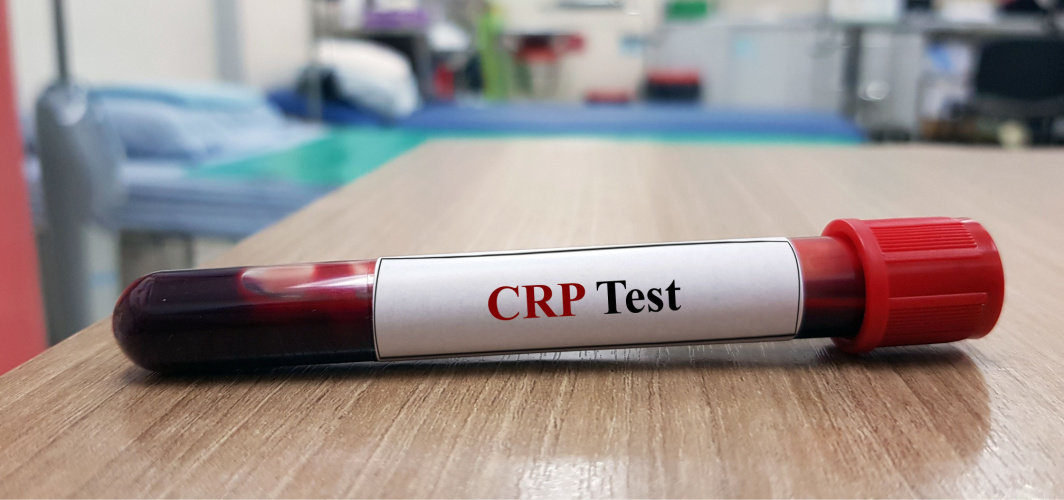- Home
- Blog
- General Health
Best Ways to Boost Skin Hydration and Repair Damage
General Health
Best Ways to Boost Skin Hydration and Repair Damage
By Apollo pharmacy ,Published On- 23 May 2025
Share this article
0
0 like
.jpg?tr=q-85,f-webp,w-400,dpr-3,c-at_max 400w)
Healthy, hydrated skin is the foundation of a radiant, youthful appearance. However, daily exposure to pollution, UV rays, harsh weather, and ageing can strip the skin of moisture, leading to dryness, irritation, and premature ageing. Maintaining hydration not only enhances your skin’s texture but also strengthens its ability to repair itself.
In this guide, we’ll explore the most effective ways to boost skin hydration and promote healing, including Xylite Lotion, a specialised formula designed to replenish lost moisture and support skin health.
Understanding Skin Hydration and Repair
Before choosing the right products or treatments, it's important to understand how your skin maintains hydration and what can compromise its ability to repair itself.
- How the Skin Retains Moisture: The outermost layer of the skin, known as the stratum corneum, relies on a healthy lipid barrier—a mix of ceramides, fatty acids, and cholesterol. This barrier plays a crucial role in locking in moisture and protecting the skin from environmental irritants and water loss.
- What Disrupts Skin Hydration: Daily exposure to harsh weather, pollution, UV radiation, and the use of strong soaps or over-exfoliating products can damage this barrier. As we age, the skin naturally produces fewer lipids, further reducing its ability to stay hydrated.
- Why Hydration Matters for Skin Repair: Moisture is essential for skin recovery. Well-hydrated skin is more elastic, resilient, and better able to repair itself. In contrast, dry or dehydrated skin becomes more vulnerable to irritation, flaking, and inflammation, and it heals more slowly.
Top Strategies to Boost Skin Hydration and Repair Damage
Keeping your skin truly hydrated and healthy takes more than just using a moisturiser. It’s about taking care of your skin from all angles—strengthening its natural barrier, helping it hold on to moisture, encouraging healthy cell renewal, and protecting it from things like sun and pollution. When all of these elements work together, your skin can stay smooth, resilient, and well-balanced. Here's how to give your skin the support it needs to stay hydrated and heal effectively.
1. Barrier Restoration: Strengthening the Skin’s Protective Layer
The skin barrier, also known as the stratum corneum, plays a central role in maintaining skin health. It acts as a physical and biochemical shield, preventing water loss and blocking the entry of harmful substances like pollutants, irritants, and microorganisms. When the barrier is damaged—due to harsh skincare products, environmental exposure, or underlying skin conditions—it can lead to dryness, sensitivity, inflammation, and delayed healing.
How to restore and support the skin barrier:
- Ceramides: These are essential lipids naturally found in the skin. Ceramide-based creams or moisturisers help replenish depleted lipids, restoring barrier function and improving hydration.
- Fatty acids and cholesterol: These lipids, when used in combination with ceramides, help reinforce the structure of the skin barrier and restore its normal function.
- Occlusive agents: Ingredients such as petrolatum, squalane, shea butter, and mineral oil form a protective layer on the skin's surface, reducing water loss by preventing evaporation. These are especially helpful in very dry or compromised skin.
- Barrier-friendly practices: Avoiding harsh soaps, over-exfoliation, and alcohol-based products helps prevent further barrier disruption.
A healthy skin barrier improves water retention, reduces sensitivity, and provides better protection from external irritants.
2. Hydration Support: Replenishing and Retaining Moisture
Hydration is essential for maintaining skin elasticity, supporting enzymatic functions involved in repair, and promoting a smooth, resilient texture. Dehydrated skin is less efficient at healing and more prone to flaking, cracking, and irritation.
Key ingredients and strategies to improve skin hydration:
- Hyaluronic acid: A naturally occurring molecule in the skin that can attract and retain large amounts of water. It helps plump the skin, reduce fine lines, and maintain elasticity.
- Glycerin: A widely used humectant that draws moisture from the environment and deeper layers of the skin to the surface, helping keep the outer layer hydrated.
- Lactic acid: Functions as both a mild exfoliant and humectant. It helps to remove dead skin cells that might be preventing proper moisture absorption while also attracting water into the skin.
- Hydrating skincare routines: Using products in the correct order—starting with hydrating serums, followed by emollients and occlusives—ensures that water is both added to the skin and sealed in.
- Maintaining proper skin hydration supports the skin’s natural healing processes and enhances overall skin texture and comfort.
3. Controlled Exfoliation: Supporting Cell Turnover and Renewal
Exfoliation is essential for removing dead skin cells, promoting cell turnover, and improving the absorption of moisturising and repair products. However, excessive exfoliation or harsh ingredients can weaken the skin barrier, leading to dryness and irritation. Using a balanced exfoliation approach ensures skin renewal without compromising hydration.
The Role of Alpha Hydroxy Acids (AHAs) in Exfoliation and Hydration
Xylite Lotion, which contains both glycolic acid and lactic acid, provides a dual-action exfoliation process that effectively removes dead skin cells while enhancing moisture retention.
- Glycolic Acid: A deeply penetrating AHA derived from sugarcane, it encourages collagen production, smooths rough texture, and improves skin tone. By removing buildup, glycolic acid allows hydration products to absorb more effectively.
- Lactic Acid: A milder exfoliant with hydrating properties, making it ideal for sensitive or dry skin. Unlike stronger AHAs, lactic acid gently exfoliates while helping the skin retain moisture, reducing the risk of irritation or excessive dryness.
Best Practices for Safe and Effective Exfoliation
- Use Xylite Lotion 1 to 3 times per week, adjusting frequency based on skin type and tolerance.
- Follow exfoliation with a hydrating moisturiser to restore moisture and support the skin barrier.
- Avoid combining multiple exfoliating ingredients such as AHAs with retinoids or physical scrubs, as this can lead to irritation and over-exfoliation.
By incorporating Xylite Lotion into a skincare routine, the skin benefits from controlled exfoliation while maintaining hydration, ensuring a smoother, healthier complexion with improved moisture retention.
4. Antioxidant Protection: Reducing Oxidative Stress and Supporting Skin Repair
Free radicals generated by UV radiation, pollution, and other environmental factors can cause oxidative damage to skin cells, leading to premature ageing, inflammation, and impaired healing. Antioxidants neutralise these free radicals, helping to reduce ongoing damage and support the skin’s repair mechanisms.
Important antioxidants for skin health:
- Vitamin C (ascorbic acid): A powerful antioxidant that also stimulates collagen synthesis, brightens uneven skin tone, and improves overall texture. It supports skin structure and helps reduce inflammation caused by oxidative stress.
- Vitamin E (tocopherol): Works in synergy with vitamin C to stabilise the skin barrier and enhance its protective function. It helps repair damaged cells and supports wound healing.
- Niacinamide (vitamin B3): Offers a wide range of benefits, including reducing redness, improving hydration, enhancing barrier strength, and diminishing pigmentation. It is well-tolerated and suitable for most skin types.
Regular use of antioxidant-enriched serums or moisturisers can improve the skin’s resilience and reduce signs of ageing while accelerating recovery from daily environmental exposure.
5. Sun Protection: Preventing UV-Induced Damage and Dehydration
Exposure to ultraviolet (UV) radiation is one of the most significant contributors to skin ageing and barrier dysfunction. UV rays damage collagen, increase water loss from the skin, and trigger inflammation and pigmentation. Daily sun protection is essential for maintaining long-term skin health and hydration.
Key practices for effective sun protection:
Use a broad-spectrum sunscreen with an SPF of at least 30. Broad-spectrum protection guards against both UVA (ageing) and UVB (burning) rays.
- Hydrating sunscreens that include ingredients such as hyaluronic acid, glycerin, or ceramides offer dual benefits—protecting the skin while maintaining moisture balance.
- Apply sunscreen generously to all exposed areas and reapply every two hours, especially after swimming, sweating, or prolonged sun exposure.
- Complement sunscreen with physical protection like hats, sunglasses, and protective clothing when outdoors.
- Consistent sun protection helps preserve the skin’s moisture levels, reduce oxidative stress, and prevent cumulative sun damage that leads to dryness and premature ageing.
Conclusion
Keeping your skin well-hydrated is key to helping it stay strong, heal properly, and bounce back from everyday stress. When your skin lacks moisture, its protective barrier becomes weaker, leaving it more sensitive and prone to damage.
Focusing on hydration, barrier repair, antioxidant support, and sun protection gives your skin what it needs to stay healthy and resilient. Using proven ingredients like ceramides, hyaluronic acid, and glycerin—along with products like Xylite Lotion—can help restore moisture and reinforce the skin’s natural defences. With a consistent, well-rounded skincare routine, you’ll see better hydration, smoother texture, and stronger skin over time.
Services
General Health
Leave Comment
Services
Recommended for you

General Health
10 Omega-3 Fatty Acids Foods For Improved Overall Health
Discover the top omega-3 fatty acids foods that can enhance your health. Learn about their benefits and how to incorporate them into your diet.

General Health
C- Reactive Protein (CRP) Test: Readings And Ways To Lower It
Learn about CRP, a protein produced by the liver in response to inflammation. Discover its role in diagnosing and monitoring diseases like infections, autoimmune disorders, and cardiovascular conditions. Stay informed about the latest guidelines, technologies, and lifestyle factors related to CRP.

General Health
6 Signs Of Unhealthy Lungs
Explore more about the signs that might indicate your lungs are not at their best. Read to know about the signs, symptoms and conditions that may indicate unhealthy lungs.
Subscribe
Sign up for our free Health Library Daily Newsletter
Get doctor-approved health tips, news, and more.

